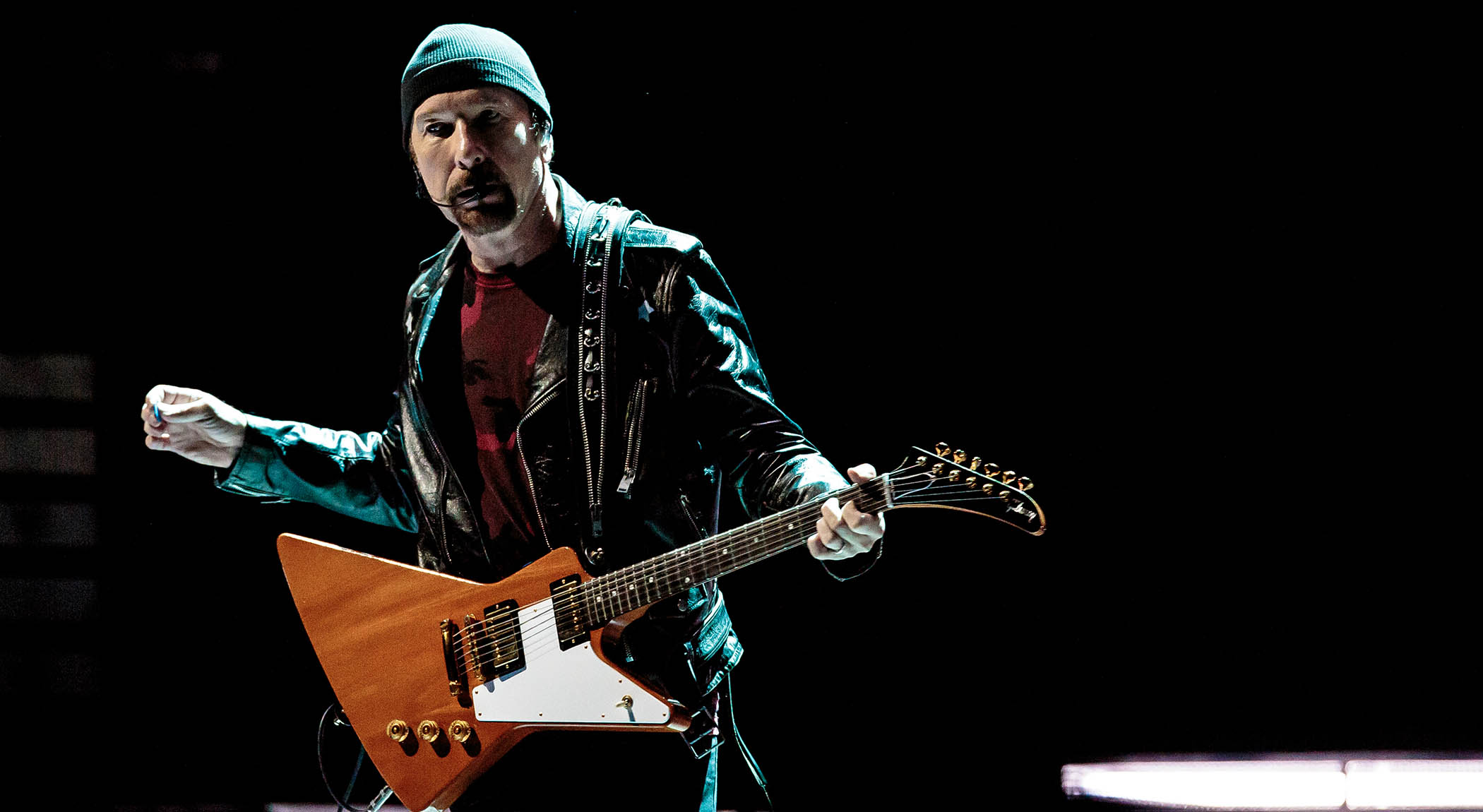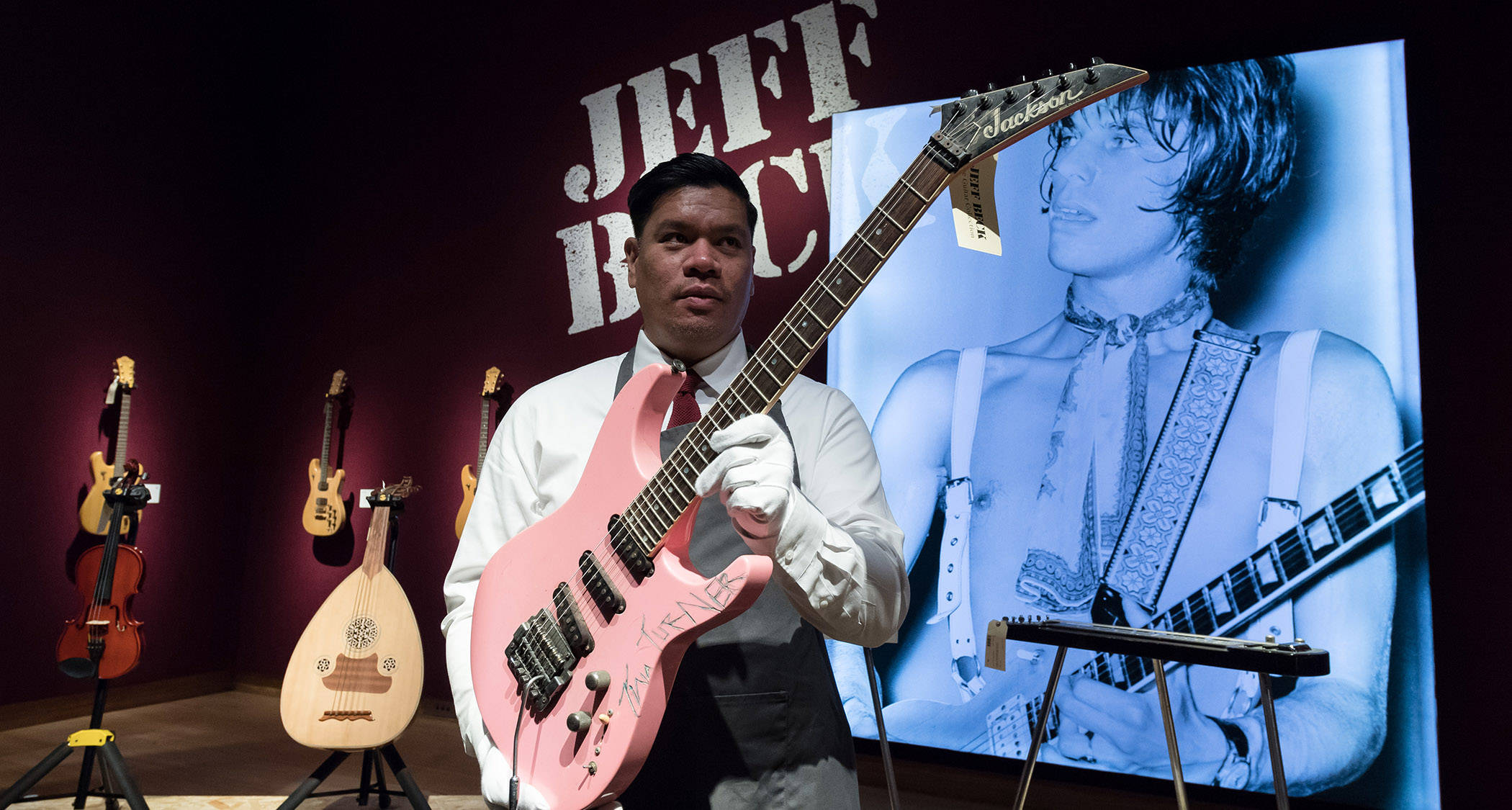When the band formed, they could barely play their instruments – then their guitarist bought a delay pedal and changed the sound of electric guitar forever
The Edge bought a delay just to fill out the sound out in U2 – it ended up all but defining them. But there's a trick to how to use it in tandem with your playing and make it sound huge

The sound of early U2 is one of the most instantly recognisable of the past 40 years in music. It was the delay pedal of guitarist The Edge in particular, along with his clever approach to composing guitar parts, that launched the band’s career and a million copycats over the decades.
The band formed in 1976 when drummer Larry Mullen Jr posted an advert on the notice board at Temple Mount Comprehensive School in Dublin, and was subsequently joined by bass player Adam Clayton, guitarist David Evans (aka The Edge) and vocalist Paul Hewson, who is obviously known by the singular title Bono.
The band could barely play their instruments at the time, but the creative energy of being released to make music and learn their craft saw them go from total musical novices to signing a record deal with Island Records, and releasing their debut album four years later in 1980.
The Edge’s guitar tone of the early years was simple, and born out of necessity. With limited technical ability and only three band members playing physical instruments, The Edge bought a delay pedal to fill the sound out around the drums and bass of Larry Mullen and Adam Clayton.
Often employing open strings and natural harmonics to maximise the ambience of the notes, he managed to instantly create a sound that had previously not been heard. While he may not be spoken of in the hallowed tones of Hendrix and Van Halen, his innovation and creativity, while less overtly technical than some others, is no less important.
Influenced by ’70s new wave and punk bands like The Velvet Underground and Sex Pistols, they were the antithesis of most rock bands of the era, not being influenced by the likes of Led Zeppelin, Hendrix or Deep Purple.
It was only later in their career that The Edge began to draw on more blues-based influences, and the Rattle & Hum album and film in the late 1980s saw them explore American music and work alongside legends such as B.B. King and Bob Dylan.
All the latest guitar news, interviews, lessons, reviews, deals and more, direct to your inbox!
A true innovator, The Edge continues to push the envelope of sounds and guitar parts, and it’s always the song that drives his playing and composition forwards. From the first rehearsal in school to the most recent venture playing 40 nights at The Sphere in Las Vegas, in what is truly one of the most innovative gig experiences ever attempted, U2 have worked tirelessly to produce music that has been built on creative and artistic integrity throughout their career.
Our track here is classic early U2, built around a simple rock-based progression in E minor (E-F#-G-A-B-C-D). There are no blues scale notes, no string bends, and little vibrato.
It’s all built around simple two-note doublestops, open strings and natural harmonics that follow the chordal harmony. And of course, that dotted 8th delay effect – for this track try a 200ms delay with a couple of repeats and a mix ratio around 70 per cent.
Get the tone
Amp Settings: Gain 6, Bass 6, Middle 7, Treble 7, Reverb 7
Using a delay pedal or plugin is crucial. Set it to a dotted 8th note and use the delay as a part of your performance, more as an instrument than merely an effect. In the early days The Edge used a Gibson Explorer, and then a Fender Stratocaster or Tele. It’s a full sound but given added brightness by the chime of his Vox AC30, so use that style of Vox amp tone if possible.
Example
The chords in the opening eight bars feature string damping and a pronounced eighth-note dotted delay. There are no guitar overdubs so it’s one part and the delay tones to focus on. It’s all built around eighth notes, but certain moments have a pronounced emphasis thanks to the delay effect.
While The Edge rarely plays what we’d usually describe as solos, he does embellish his parts with catchy melodic movement. You’ll see on the video that all the notes I played on the recording are downstrokes with the pick, with the exception of the highest natural harmonic on the second string in bars 17-24.


